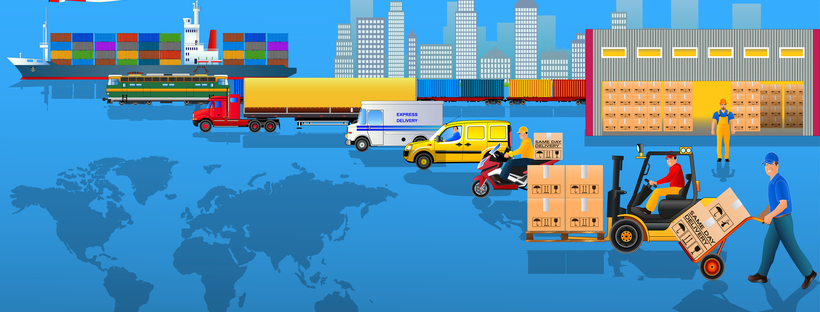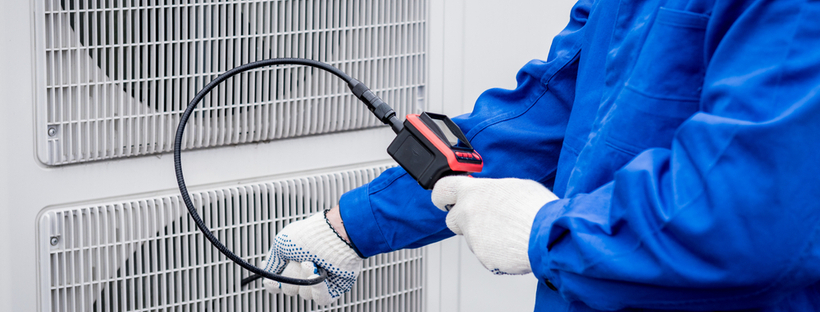How To Deal With Rising HVAC Supply Chain Prices

Inflation will Continue to Impact HVAC Companies in 2022
6 MIN. READ
In 2021, society faced a perfect storm of market conditions, driving up prices for HVAC parts and equipment. Inflation is still impacting significant sectors of construction, while supply shortages are also pushing prices up. This article will examine the challenges related to HVAC supply chain prices and provide some strategies to overcome them.
What is driving inflation in HVAC supply chain prices?
Old-fashioned supply and demand imbalances
Overall, it is a classic case of too much money chasing too few goods. COVID-19 caused U.S. and global employment (and thus production) to drop steeply. With the help of a massive federal stimulus, the U.S. economy staged a surprisingly rapid recovery. Manufacturers who had cut back were caught unprepared by suddenly increasing demand. Labor shortages persisted. Production lagged. Shortages ensued.
Overarching all of this, the global supply chain was severely strained, with maritime shipping hit the hardest. A large number of ships have been anchored outside Long Beach Harbor, waiting to dock and unload. Some reports say the situation is slowly improving, but it will take time, probably months, to untangle.
After skyrocketing, freight rates between China and the U.S. are slowly declining, but are still far higher than this time last year.
Surging commodity prices
Diesel fuel prices are up almost 50%, from $2.50/gallon in November 2020 to $3.73/gallon a year later. Diesel fuels the trucks that deliver supplies and equipment. As a result, transportation costs have risen dramatically, and with them, the cost of goods they transport.
Overall, petroleum prices have surged based on a complicated set of factors, including a demand-driven spike in natural gas prices and storm-related damage to U.S. oil refineries in the Gulf of Mexico.
Steel products prices have also risen by approximately 83% over the last 11 months. HVAC parts and major equipment almost universally contain steel and thus are much more expensive than they were last year.
Other materials, like lumber, experienced higher prices in mid-2020 to mid-2021, but they appear to be moderating. Lumber is heavily used in pallets for shipping HVAC equipment.
Copper, another commonly used component in HVAC parts and equipment (tubing and conductors), is now trading at around $4.30 per pound, up from around $3.20 per pound, a rise of 34% since January 2021. The cause is a shortage of copper due to a lack of global investment in copper production.
Price levels are expected to stick around $4.40 per pound for the next year, so relief is still in the distance as production ramps up.
Aluminum is used in evaporator coils and condensers. Its price (U.S. Midwest benchmark) has spiked 136% to a 13-year high of $34.75 per pound. The rapid rise is attributed to COVID-19 disruptions, energy shortages in China, transportation slowdowns, labor shortages and U.S. tariffs on imports. Prices are not expected to ease until later in 2022.
Refrigerants joined the inflation parade with the phasing out of R-22 gas. Its replacement with more eco-friendly Puron (R410a) gases comes with a higher price tag aggravated by high demand and trade issues with China. Upward price pressures are expected to persist into 2022.
Microchips, used in controls for high-efficiency HVAC units, are made from semiconductor materials. The story here is familiar: reduced production, supply chain issues and a surprise surge in demand during COVID-19 for things like TVs, gaming consoles, smartphones and more are all factors in the shortage and higher prices. The prognosis for production to catch up to increasing demand is uncertain. But prices are expected to rise, perhaps significantly.
HVAC equipment manufacturers passing along higher HVAC supply chain prices
In June and July 2021, Carrier, Trane, Lennox, Daikin and Ruud raised their prices for the third time. These are industry-leading manufacturers of high-end, big-ticket HVAC equipment.
The pressure is on for HVAC contractors to pass these increases on to customers. At the same time, lead times for equipment are stretching longer due to shortages and supply chain issues. Expect to deal with this for the near to mid-term.
Now, we will consider what HVAC contractors can do about these problems.
Strategies to overcome challenges of HVAC supply chain prices
To come out stronger on the other side, consider the following:
- Join a purchasing program like Raiven to gain priority status with distributors and deep discounts on HVAC parts and equipment.
- Implement purchasing software that makes finding and buying products more efficient.
- Let technology find availability and the best value for equipment and materials you’re looking for.
- Take this as an opportunity to upgrade your purchasing procedures and your business planning for a stronger future .
Let’s take a look at how Raiven can help you with these strategies.
Raiven’s purchasing program saves 7% to 25%
If you want to forgo the time and effort of negotiating supplier pricing, join a purchasing program. Raiven’s customers experience 7% to 25% discounts based on Raiven’s $250M+ in buying power plus receive high priority status on inventory. You can access a portfolio of industry-leading suppliers, such as Home Depot, Ferguson, Carrier and more that all have pre-negotiated discounts and service levels through Raiven’s exclusive partnership with Avendra.
Deep discounts like these can help mitigate price increases. And you can be confident from the start in reliable supplier inventory levels in these risky times.
Implement your own Private Marketplace
You need technology to succeed in today’s inflationary, supply-chain-constrained world. You need a solution that is easy to implement, easy to use and cost-effective.
Raiven has the answers. With our user-friendly, cloud-based Marketplace, Raiven provides a centralized purchasing platform you can use to access and manage all your suppliers from one location. It’s your own private Marketplace. Raiven automates all the manual processes you probably use today for your purchasing needs — no more Excel files, emails or multiple supplier portals.
Raiven gives you one-click access to your favorite suppliers, which makes buying fast and easy. Further, it stores all your purchasing data in one place. You will know what you buy from which supplier, how often and at what price. Information is power in the form of increased negotiating leverage.
Always get the lowest price
Another great feature is Raiven’s digital buying assistant, an AI-powered browser extension. Whenever your employees are viewing products on a website, Raiven will immediately alert your employees in real-time when it finds a better value from one of your suppliers. No more manually searching for lower prices at different supplier websites, Raiven does it for you!
Get a firm handle on HVAC supply chain prices. Transform your HVAC purchasing with Raiven and focus your time on delighting your customers. For more information or a free demo, contact us today!


